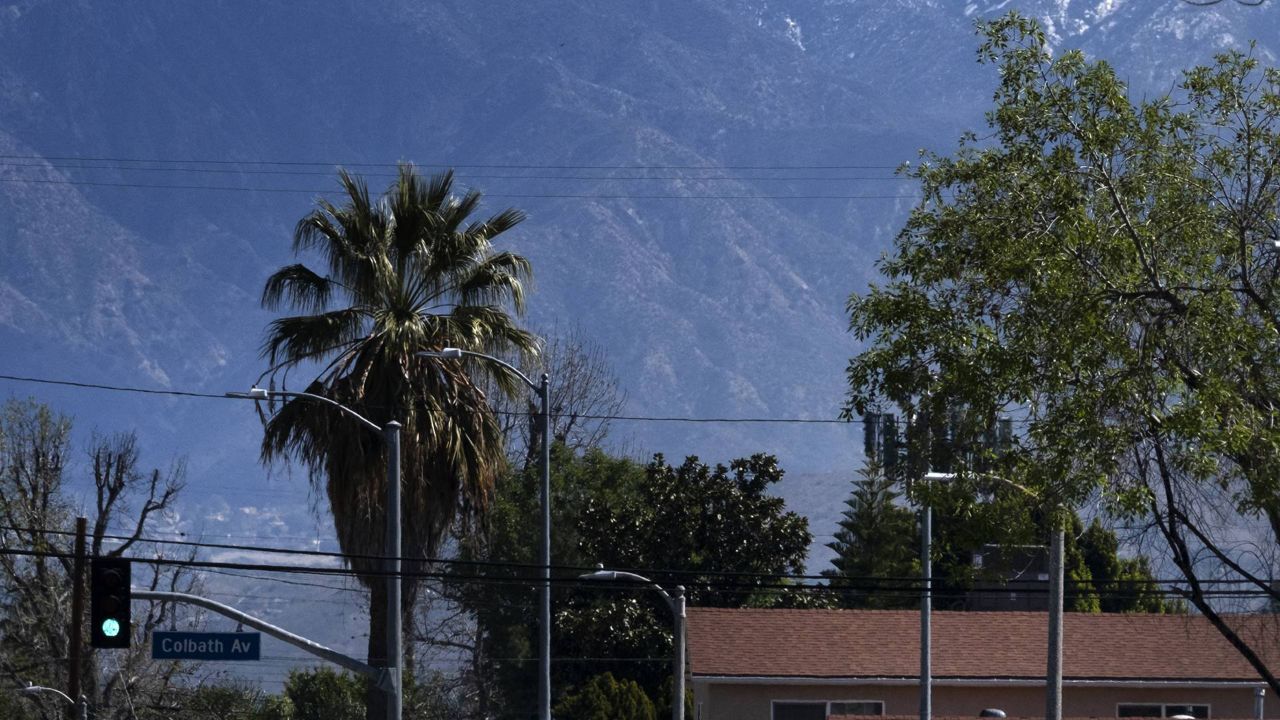LOS ANGELES — Asphalt is more commonly associated with Los Angeles than green, leafy trees.
But a new partnership between the City of LA and the University of Southern California hopes to change that. It’s called the Urban Trees Initiative.
Designed to guide the growth of an urban forest of shade trees to benefit the health and quality of life for disadvantaged communities on LA’s east side, the initiative is focused on the neighborhoods of Ramona Gardens, Lincoln Heights and El Sereno.
Covering five square miles near the university’s Health Sciences Campus, the area lacks trees alongside one third of its 1,157 streets, and its parks average half the number of trees compared with parks citywide, USC researchers found.
“When you think about planting trees, it’s such a simple concept: Reduce pollution, improve air quality and give shade in a city that needs it,” USC President Carol L. Folt said Tuesday during a webinar about the initiative presented by the LA Department of Public Works. “With an aging population, people that have to walk down unshaded streets to get on a bus can suffer adverse effects and be kept indoors, away from the help and social opportunities they need. It’s not just about the environment and that long-term effect. It’s about people’s lives.”
Trees are beneficial for the shade and cooling they provide, which helps improve public health and wellbeing by reducing the risk of heat stroke, heart attacks and breathing problems that result from air pollution and excess heat.
USC researchers have said that cooling parts of the city with trees will also encourage exercise and active transportation by making it more comfortable for people to walk and bicycle.
Temperatures on LA’s streets can get as hot as 140 degrees, with sidewalks sometimes reaching 120, the researchers found. And climate change is expected to make them even hotter. By 2060, LA is expected to see temperatures of 95 degrees or higher 40 days each year. But if streets and sidewalks are situated under shade trees, they could be as much as 50% cooler.
With two-thirds of the world population projected to live in urban areas by 2060, “we have to get this right in our cities,” Folt said of the initiative — which was convened by USC and supported by funding she facilitated with the university’s Dornsife College of Letters and Sciences.
"Our cities are where people live," she said. "The benefits of a fully functional environment to people's health, to temperature, to air quality, to quality of life, aesthetics and our children’s ability to appreciate being outside means we have to get this right."
LA, she added, has an opportunity to be a model for the world.
A road map for growing an urban forest in LA, the Urban Trees Initiative is an outgrowth of the Green New Deal that LA Mayor Eric Garcetti announced in 2019. The deal called for planting 90,000 new trees citywide and increasing forest canopy in low-income heat zones by 50%.
“Our vision, we’re looking for healthy urban forest where every neighborhood has the same access to the benefits trees provide,” said Rachel Malarich, the first City Forest Officer for LA.
Malarich explained that she has two key priorities: developing the city’s first urban forest management plan to determine what policies and programs and needed to grow LA’s urban forest, and developing a community-informed game plan to achieve the mayor’s goal of increasing tree canopy 50% in areas of greatest need by 2028.
“I want to make sure we get this right,” Malarich said. “When we talk about planting 90,000 trees and increasing tree canopy, we want to make sure we’re making really smart investments, that we’re not just planting but thinking what we want to get out of it.”
Through the Urban Trees Initiative, USC researchers in the fields of spatial sciences, earth sciences and landscape architecture are determining where trees would best be planted to achieve the most benefits, as well as what types of trees and how many. And they are developing their strategy for East LA.
Using data collected from computer analyses, maps of the natural and built environments and demographic data including vehicle access and housing costs, the researchers found the greatest need for new trees was in four key areas. Places with a high percentage of young children and elderly and low median household income are good candidates, as are areas with high population density and large numbers of households with no vehicles, indicating that people rely on walking or public transport to get around.
The initiative is looking at adding trees on streets with narrow parkways, on streets with wide parkways, in existing parks, at elementary schools and in specific settings such as public housing.
“LA lags behind many major cities in the U.S. when it comes to shade cover,” said USC Dornsife College of Letters and Sciences Dean Amber Miller on Tuesday. “Not all trees bring the same benefits. Not all locations can support trees. A map of LA’s trees is also a map of income, race and human health.”



